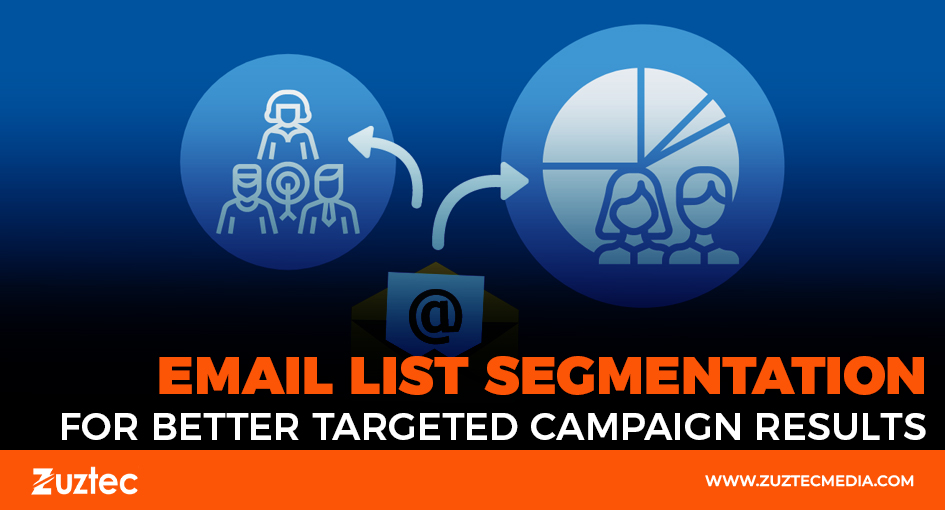
Email List Segmentation For Better Targeted Campaign Results
Email marketing is a powerful tool for engaging with customers, but the effectiveness of each campaign depends heavily on how well you understand your audience. That’s where email list segmentation becomes a critical strategy. Rather than sending the same generic message to everyone, segmentation allows you to divide your email list into smaller groups based on specific criteria. This leads to more relevant messaging, higher engagement rates, and, ultimately, better results.
In today’s digital environment, users expect personalized communication. They are more likely to open and interact with messages that directly address their interests, behavior, or demographics. When marketers fail to meet this expectation, their emails often go ignored or deleted. Segmentation solves this by making each campaign feel more tailored to the individual, which builds trust and increases the likelihood of action.
Email-list segmentation can be based on several factors such as purchase history, browsing behavior, age, gender, geographic location, or engagement level. Even simple segments—like separating new subscribers from long-term customers, can improve campaign performance dramatically. By sending the right message to the right group at the right time, brands can boost open rates, reduce unsubscribe rates, and drive more conversions.
This article explores email-list segmentation in depth, highlighting how to implement it effectively and why it’s essential for maximizing your email marketing success.
Email List Segmentation To Improve Engagement And ROI
Email-list segmentation involves dividing your subscribers into specific categories so you can send more targeted and meaningful content. It is one of the most effective tactics for increasing email engagement, with marketers reporting significantly higher open and click-through rates as a result.
There are many ways to segment an email list, depending on your business goals and available data. Demographic information like age, gender, or location can be a good starting point. Behavioral data, such as past purchases, product views, or email engagement, can also offer insights into what your audience cares about. For example, a clothing brand might send one message to customers who recently bought winter wear and a different one to those who showed interest in summer collections.
Another smart approach is lifecycle segmentation. This means creating separate campaigns for new subscribers, loyal customers, inactive users, or those who abandoned carts. Each group has different needs, so using the same message for all can be ineffective.
The more relevant your emails are, the more likely they are to generate positive responses. That’s why segmentation is key to creating campaigns that connect and convert.
Tools And Techniques For Segmenting Your List
Segmenting your email list requires access to accurate and detailed subscriber data. Most email marketing platforms offer built-in tools to help with this process, making it easier than ever to create dynamic segments based on real-time behavior and user attributes.
Start by collecting useful data during the sign-up process. This could include name, location, and interests. As users engage with your content, your system can track which links they click, what products they browse, and how frequently they open emails. All of this data can be used to build more precise segments over time.
Tagging is another helpful method. When a subscriber clicks on a specific link or takes a certain action, you can automatically assign a tag that groups them with similar users. Tags allow for quick, rule-based segmentation and help automate the sending of personalized content.
Benefits Of Segmentation In Real-World Campaigns
Incorporating email list segmentation into your marketing strategy can have a noticeable impact on key performance metrics. Studies show that segmented campaigns can lead to a 14% higher open rate and a 100% increase in click-through rate compared to non-segmented ones.
One example of effective use is e-commerce brands that send personalized product recommendations based on browsing and purchase behavior. Instead of sending a mass promotion, they tailor offers to what each customer is most likely to buy. This not only improves the customer experience but also drives more sales.
Another practical benefit is managing inactive subscribers. By segmenting out those who haven’t opened emails in a certain time frame, you can create targeted reactivation campaigns. This helps maintain list hygiene and improves sender reputation with email service providers, which ultimately enhances deliverability.
Conclusion: Start Small And Grow Your Segmentation Strategy
If you’re new to email-list segmentation, the idea of dividing your audience into multiple groups might seem overwhelming. But you don’t need to start with complex rules or dozens of segments. Even small improvements, like grouping by purchase history or engagement level, can make a big difference in how your emails perform.
Successful marketers understand that the key to meaningful engagement is relevance. By following proven strategies for email-list segmentation, you can deliver more personalized content that resonates with your audience and drives better results. As your data grows and your tools improve, your segmentation approach can evolve to become even more targeted and effective.
In conclusion, focusing on email list segmentation is one of the most valuable steps you can take to enhance your email marketing performance. It allows for smarter targeting, better engagement, and higher return on investment, making it a must-have tactic for any serious digital marketer.

